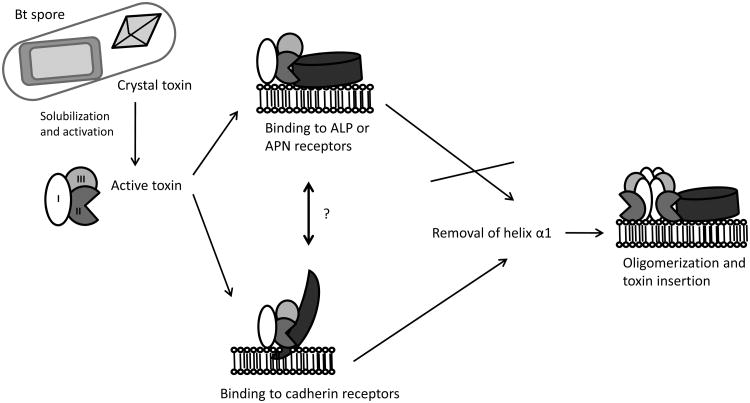Figure 2.
Models of Cry toxin mechanism in mosquitoes. Upon ingestion by a mosquito larva, the alkaline midgut environment promotes solubilization of crystalline inclusions releasing the protoxins, which are cleaved by gut proteases resulting in formation of active toxins. Toxin binding occurs first with the cadherin protein triggering cleavage of helix α1, leading to the formation of oligomeric toxins, which then bind anchored APN or ALP proteins in lipid rafts, resulting in the insertion of oligomeric toxins into the cell membrane. Alternatively since mosquitocidal toxins have high affinity to APN and ALP receptors it is possible toxin binding initially involves APN and ALP receptors followed by binding to a cadherin protein.

